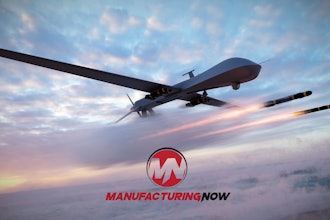
Constrained by an industry-wide shortage of skilled labor, food and beverage (F&B) manufacturers have begun tapping ChatGPT and other generative artificial intelligence (AI) tools to partially automate the creation of work instructions, operating manuals, and even job descriptions. However, the greatest potential impact for F&B companies is in using other AI technologies, such as machine learning and expert systems, to optimize their manufacturing operations.
In fact, many manufacturers already take advantage of the AI functionality that is embedded in modern enterprise resource planning (ERP) and manufacturing execution system (MES) software. Five of the most widely adopted tools that leverage embedded AI are alerts and workflows, forecasting, statistical process control (SPC), predictive maintenance, and automated scheduling. Let’s look at how these tools utilize algorithms to learn from data, create results based upon past experiences, and generate forward-looking answers and guidance for F&B manufacturers.
Alerts and Workflows
Alerts and workflows are mechanisms within modern ERP systems that leverage embedded AI to call attention to and demand action on tasks. For example, a workflow might remind an operator to periodically check whether the temperature remains within acceptable parameters. Meanwhile, an alert might be issued if a sensor detects that the temperature is too low for the recipe, or an operator has missed the scheduled temperature check.
With workflows and alerts, automated queries continuously run in the background probing for next steps and identifying situations that require management intervention. In this way, they serve as the management team’s automated eyes and ears on the operation, guide day-to-day processes of the business, and minimize the need for manual supervision and oversight. Instead, employees can manage by exception, focusing on truly unique and outlying problems.
Forecasting
F&B companies typically use forecasting to automatically review sales orders and sales history and predict the need for multiple resource types in their operations. Factors often include ingredients, labor requirements, machine and tooling demands, equipment maintenance implications, and production schedules, among others.
Forecasting based on embedded AI algorithms or models generally calculate future demand from sales orders and historical sales in one of two ways. With the basic approach, an experienced forecaster assigns a forecast model to an item, for example, weighting last quarter’s sales at 25% and the prior nine months sales at 75% to forecast the next quarter. More sophisticated forecasting will run multiple models over historical data and discover the algorithm that best aligns with the historical pattern. Either way, large amounts of reference data are used to produce a forecast in minutes—far exceeding a human analyst’s capabilities—and then create directives for multiple downstream plans.
Statistical Process Control
SPC is a major factor in high-volume, machine-based manufacturing, such as retail consumer snacks and beverages. Here, production and process monitoring results are stored in time series of data associated with production items and work centers. The SPC engine then applies this reference data to embedded machine-learning algorithms that analyze parameters against actual performance. If times series data show trends leading to out-of-bounds conditions, the SPC software will trigger an alert or even initiate an automatic machine shutdown.
SPC tools also assist in the diagnostic and correction phase by getting to a problem’s root cause. For instance, a lack of lubricant may cause a machine part to wear faster, leading to improperly cut pasta. Using SPC tools, these data points can be overlaid, and time can be shifted to correlate the events leading to the failure and its root cause.
SPC tools are also playing a bigger role within F&B supply chains as more major brands require contract manufacturers, packaging providers, and others to provide proof of quality and process control using real-time SPC data generated during production.
Predictive Maintenance
Predictive or preventive maintenance uses embedded AI to stop problems before they occur. Like SPC, it is based on production and process monitoring, the recording of actual run time, and results from tooling and equipment. Key parameters, such as the number of use cycles on the equipment and the equipment’s evolving condition, are recorded in a time series, and limitations are set.
The main difference is the element of prediction. For example, if a machine rated at a 50-ampere current draw is now drawing 45 amperes, the predictive maintenance tool can identify that a problem is likely in process and send an alert that the machine requires corrective action. Such guidance helps F&B manufacturers to more effectively manage production, meet delivery commitments, and avoid rush costs.
Automated Scheduling
To schedule a single job, F&B manufacturers must ask: “How many are needed? When? And what ingredients, materials, equipment and skills are required?” But even a mid-size F&B operation may have two dozen jobs spread over hundreds of recipes—all competing for the attention of 20 machines and 40 workers. Automated scheduling leverages embedded AI with multiple layers of machine intelligence to consider very large data sets plus several constraints and parameters to create an optimized production schedule within minutes.
Automated scheduling begins with a first layer of intelligence, material resource planning, which provisions the availability of ingredients, materials and labor. The next layer determines which machine runs the job best (“runs best” metric). Meanwhile, a labor resource reference identifies the operators certified to run the job. The predictive maintenance layer of intelligence identifies which machines and tools will be available to run the job. The automated scheduling tool iterates through all possible combinations, considers all the constraints, and creates an optimal production schedule.
Conclusion
Generative AI tools like Chat GPT have helped reinforce the need to fully utilize the AI already embedded in existing manufacturing systems. ERP and MES software, in particular, offer embedded AI functionality to augment and automate core business processes and free management to focus on continuous improvement and innovation. By adopting tools that leverage embedded AI, F&B manufacturers can achieve the operational efficiency and productivity to grow their business and profitability.
Steve Bieszczat is the chief marketing officer at DELMIAworks.






















